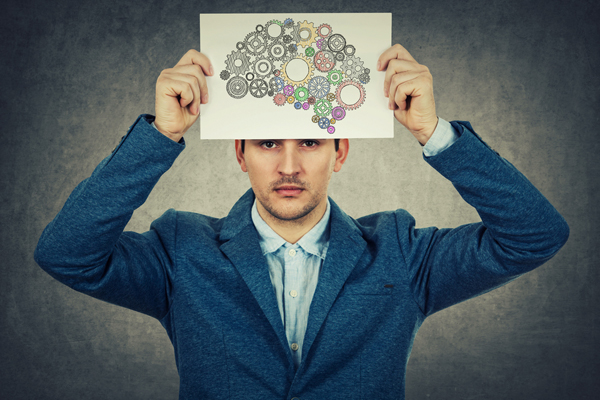TMS Therapy vs. Electroconvulsive Therapy for Severe Depression

Brain stimulation techniques like transcranial magnetic stimulation (TMS) and electroconvulsive therapy (ECT) can manage severe cases of depression. Psychiatrists will recommend brain stimulation for mental health issues that are resistant to more conservative treatment options. They might use this type of intervention as a standalone treatment or as part of a larger treatment plan. Transcranial magnetic stimulation and ECT have similarities and marked differences. Keep reading to find out more about each therapy.
Brain stimulation, TMS, and ECT
Depression is an apt term for what goes on in the brain of a person suffering from this mental health condition. From a physiological perspective, there is a correlation between depression and a decrease in activity in certain parts of the brain.
Specifically, depressed people often have low levels of neural activity in sections of their prefrontal cortex. This is the part of the brain responsible for decision-making, emotional response, and mood regulation. These aspects of mental function improve or deteriorate depending on a person’s mental and emotional state.
This is where brain stimulation via ECT or TMS comes into play. Both these therapies serve to increase activity in the prefrontal cortex. Stimulating the nerve cells in this portion of the brain helps in the following ways:
- Exciting the nerve cells in the prefrontal cortex triggers a release of beneficial neurotransmitters that regulate mood
- An increase in brain activity enables a person to make accurate associations between their actions and the consequences of those actions
- This goes a long way toward improving the person's decision-making capabilities
Both transcranial magnetic stimulation and electroconvulsive therapy stimulate the nerve cells in the brain. The difference is in how each treatment excites the nerves.
How TMS therapy works
TMS is the application of a magnetic field directly over a pinpoint section of the prefrontal cortex. It is worth noting that the nervous system constantly transmits electrical impulses, much like the wiring in a device. Applying a magnetic field to this "wiring" will have an effect. The magnetic field induces tiny electrical impulses in the brain. These small electrical currents stimulate the nerve cells, increasing their activity level. This goes a long way toward helping the patient deal with the symptoms of depression.
How ECT works
While TMS employs magnetism to induce electrical activity in the brain, ECT involves the direct use of electric current. A doctor will target areas of the brain with low electric voltage to activate specific nerves and neural pathways.
Comparing ECT and TMS
ECT is more invasive than TMS, and the procedure happens under anesthesia or sedation. As a general rule, ECT treats extreme cases of depression because it is the more aggressive of the two therapies. TMS is suitable for serious but less severe forms of depression.
TMS therapy is painless and non-invasive, enabling patients to resume their daily routine immediately after a session. In contrast, ECT requires that the patient receive help from a caregiver throughout treatment.
Frequently asked questions about TMS therapy
Thinking about getting TMS therapy? Let us go over the answers to some frequently asked questions:
1. Who is qualified to perform TMS therapy?
Psychiatrists or physicians typically perform TMS therapy. The procedure starts with the patient’s motor threshold being determined by gradually increasing the intensity of the electromagnetic waves sent into their brain until their fingers twitch.
The treatment is always performed under the supervision of a psychiatrist or other trained healthcare professional. Patients can stop the treatment at any time if they feel uncomfortable.
2. Will I need to be hospitalized?
Unlike ECT, patients do not need general anesthetics or sedatives during their treatments, so there is no need for hospitalization. TMS therapy is an outpatient procedure, and patients remain awake throughout. There is no recovery time needed after the treatment, and most patients can drive themselves back home.
TMS treatments usually involve 40-minute treatment sessions five days per week for about four to six weeks. Patients are evaluated individually to determine their treatment schedule.
3. What are the most common side effects of TMS therapy?
Only a tiny percentage of patients end up discontinuing their treatments due to side effects. The most common side effects of the procedure are mild headaches that typically go away as the patient gets more treatments. These headaches can be managed with over-the-counter painkillers.
A third of patients report facial twitching or painful sensations on the scalp following TMS therapy. These also tend to go away as patients get more treatment sessions under their belts.
Good mental health is a goal that you can reach
We offer personalized care that improves the daily lives of our patients. Reach out to us to find out how we can work together toward better mental health. You can learn more about TMS treatment from our staff.
Request an appointment here: https://www.hopetmsofny.com or call Hope TMS and Neuropsychiatric Center at (646) 578-8152 for an appointment in our New York office.
Check out what others are saying about our services on Yelp: Read our Yelp reviews.
Recent Posts
Insomnia disrupts sleep patterns and negatively affects overall health, leading to fatigue, difficulty concentrating, and emotional distress. This condition can result from chronic stress, anxiety, depression, or medical issues that interfere with the body's natural sleep cycle. A psychiatrist can help diagnose and address insomnia, providing tailored treatments focusing on mental and physical well-being.Insomnia is…
Relationship obsessive-compulsive disorder (ROCD) is a distinct subtype of OCD that can cause persistent doubts and distressing thoughts about romantic relationships. OCD treatment can help individuals manage their intrusive thoughts and compulsive behaviors associated with ROCD. Understanding and having access to the available treatment options can help individuals regain control over their thoughts and the…
Smoking cessation is one of the best things a person can do for their health. Still, despite the ill health effects of smoking and the clear benefits of quitting, many people find it nearly impossible to quit on their own. If you are finding it hard to quit, gain insight into why you may be…
Transcranial magnetic stimulation (TMS) is a cutting-edge treatment that offers hope for people dealing with depression and anxiety, especially those who have not found relief with medication or therapy. TMS is a non-invasive procedure that uses magnetic fields to stimulate specific areas of the brain involved in mood regulation. This innovative approach is helping many…


